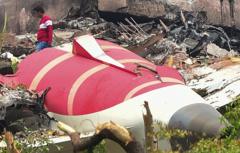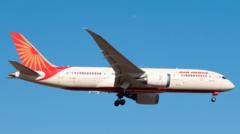To recap significant events that led to a recalibration of aviation safety protocols, South Korea will start integrating drones into airport operations next year to deter birds, following the devastating Jeju Air crash that claimed 179 lives. The nation's transport ministry has set forth an ambitious strategy to revamp airport infrastructure, aiming for the complete rollout of drone-assisted bird mitigation systems by 2028.
South Korea Implements Drones to Enhance Aviation Safety Following Tragic Crash

South Korea Implements Drones to Enhance Aviation Safety Following Tragic Crash
In a decisive move to bolster air safety, South Korea announces drone deployment plan to prevent bird strikes after Jeju Air disaster.
April 30, 2025 — The South Korean government has announced innovative measures to enhance aviation safety, with a primary focus on deploying drones at airports to mitigate the risks of bird strikes. This initiative comes in the wake of a catastrophic crash involving Jeju Air Flight 2216 that resulted in the tragic loss of 179 lives on December 29, 2024.
The proposed drone operations are set to commence in the first half of 2026. These unmanned aerial vehicles are designed not only to scare birds away from flight paths but will eventually be equipped to identify birds, and dispense repellents. The initiative forms part of a larger aviation safety reform permitted by the transport ministry, which also includes upgrades to vital airport infrastructure at six major airports slated for completion by this year's end.
The Jeju Air disaster unfolded during the aircraft’s landing phase at Muan International Airport. Pilots declared an emergency as they encountered a bird strike prior to descending, leading to a subsequent crash where the plane collided with a localizer antenna, resulting in an explosive fire and significant fatalities. The stark review of this incident raised alarms among aviation safety advocates who emphasized pre-existing warnings regarding bird strike hazards at South Korea's airports.
Investigations revealed traces of bird parts in the engines, yet the final cause of the crash remains undetermined. Amidst this backdrop, authorities committed to replacing rigid localizer structures with frangible designs that minimize crash severity. Experts underline the increasing trend of utilizing drones globally for bird deterrence, emphasizing that these cutting-edge tools stand to significantly enhance flight safety.
As the country grapples with the memory of the aviation tragedy, the phased introduction of drone technology signals a concerted effort to reassess and confront looming dangers in commercial air travel. The impending aviation safety reforms not only aim to prevent future catastrophes but also reflect a proactive governmental stance on ensuring the safety of passengers and crew alike in an evolving air travel landscape.
The proposed drone operations are set to commence in the first half of 2026. These unmanned aerial vehicles are designed not only to scare birds away from flight paths but will eventually be equipped to identify birds, and dispense repellents. The initiative forms part of a larger aviation safety reform permitted by the transport ministry, which also includes upgrades to vital airport infrastructure at six major airports slated for completion by this year's end.
The Jeju Air disaster unfolded during the aircraft’s landing phase at Muan International Airport. Pilots declared an emergency as they encountered a bird strike prior to descending, leading to a subsequent crash where the plane collided with a localizer antenna, resulting in an explosive fire and significant fatalities. The stark review of this incident raised alarms among aviation safety advocates who emphasized pre-existing warnings regarding bird strike hazards at South Korea's airports.
Investigations revealed traces of bird parts in the engines, yet the final cause of the crash remains undetermined. Amidst this backdrop, authorities committed to replacing rigid localizer structures with frangible designs that minimize crash severity. Experts underline the increasing trend of utilizing drones globally for bird deterrence, emphasizing that these cutting-edge tools stand to significantly enhance flight safety.
As the country grapples with the memory of the aviation tragedy, the phased introduction of drone technology signals a concerted effort to reassess and confront looming dangers in commercial air travel. The impending aviation safety reforms not only aim to prevent future catastrophes but also reflect a proactive governmental stance on ensuring the safety of passengers and crew alike in an evolving air travel landscape.






















